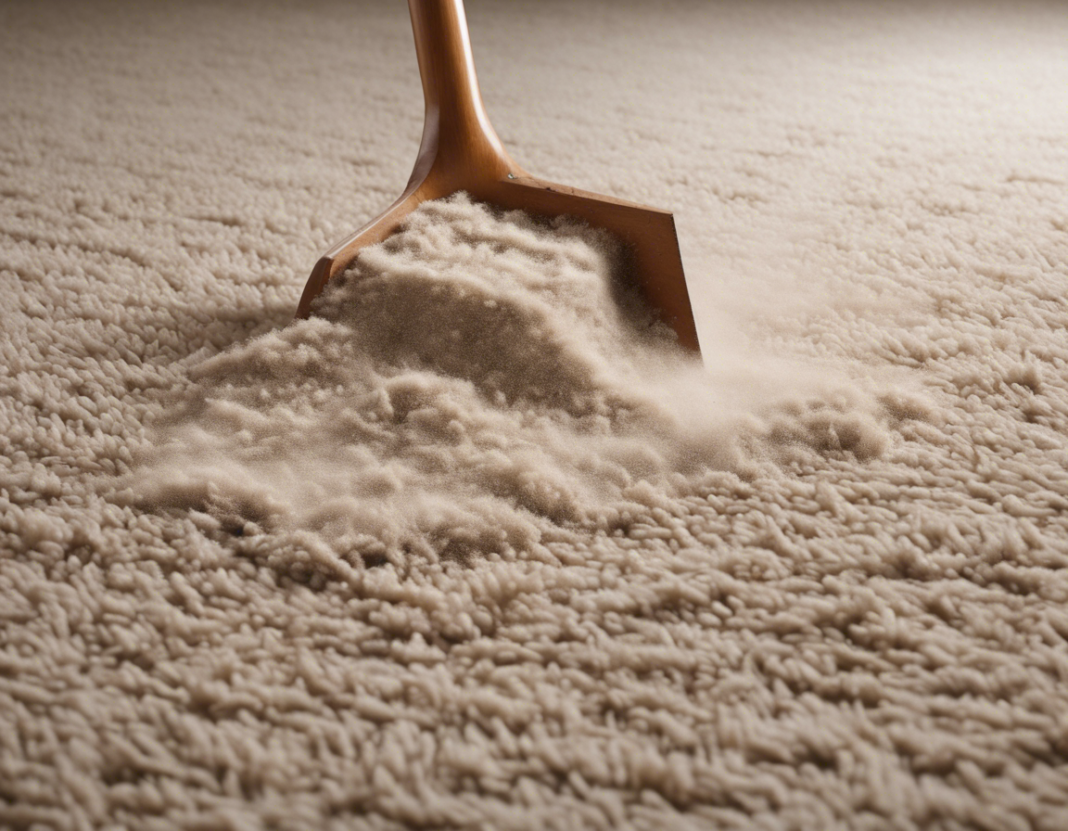Introduction
Beating a carpet is a common household chore that many people engage in to remove dust and dirt. However, have you ever wondered why this simple act of beating a carpet actually releases dust into the air? In this article, we will delve into the science behind why beating a carpet releases dust particles and how understanding this phenomenon can help you keep your living space cleaner and healthier.
The Composition of Dust
Before we explore why beating a carpet releases dust, it’s essential to understand what dust is composed of. Dust is a complex mixture of particles that can vary in size and composition. Common components of household dust include skin cells, hair, pollen, soil, pet dander, and other small particles. These particles settle on surfaces like carpets over time, contributing to the buildup of dust in your home.
Mechanical Impact and Dust Release
When you beat a carpet, you subject it to mechanical impact. This physical action causes the carpet fibers to vibrate and flex, dislodging the accumulated dust particles trapped within them. As you continue to beat the carpet, the energy from each impact is transferred to the dust particles, causing them to become airborne.
Air Turbulence and Dust Dispersal
As the dust particles are liberated from the carpet fibers, they enter the surrounding air due to the turbulence created by the beating action. This turbulence disperses the dust particles in various directions, leading to the visible cloud of dust that often accompanies carpet beating. The smaller, lighter particles are more easily carried by the air currents, spreading further than larger particles.
Particle Size and Airborne Duration
The size of dust particles plays a crucial role in how long they remain airborne after being released from the carpet. Smaller particles, such as those found in dust, have less mass and are more easily influenced by air currents, allowing them to stay suspended in the air for extended periods. This is why you may notice a cloud of dust lingering in the air after beating a carpet, especially if the room is not well-ventilated.
Health Implications of Released Dust
While the act of beating a carpet can effectively dislodge dust and dirt, it also poses potential health concerns. Inhaling airborne dust particles can aggravate respiratory conditions such as allergies and asthma. Additionally, certain dust particles may contain allergens, bacteria, or other contaminants that can compromise indoor air quality. Ensuring proper ventilation during carpet beating and using protective gear such as masks can help reduce the risk of inhaling harmful particles.
Tips for Minimizing Dust Release
While it may be challenging to eliminate dust entirely, there are several strategies you can employ to minimize dust release when beating a carpet:
1. Vacuum Regularly: By vacuuming your carpets frequently, you can reduce the amount of dust buildup, making the carpet beating process more effective.
2. Use a Beater Bar: If your vacuum cleaner has a beater bar attachment, use it to agitate the carpet fibers and loosen embedded dust before beating the carpet.
3. Beat Outdoors: Whenever possible, take your carpet outside to beat it. This allows the released dust to dissipate into the open air instead of accumulating indoors.
4. Wear a Mask: To protect yourself from inhaling airborne dust particles, consider wearing a protective mask while beating a carpet.
5. Improve Indoor Air Quality: Investing in an air purifier can help capture dust particles that are released during carpet beating, improving indoor air quality.
Conclusion
In conclusion, the act of beating a carpet releases dust due to the mechanical impact that dislodges particles trapped within the fibers. Understanding the science behind this phenomenon can help you take proactive steps to minimize dust release and maintain a cleaner living environment. By incorporating the tips mentioned above and being mindful of indoor air quality, you can effectively manage dust buildup and promote a healthier home environment.
FAQs
1. Does beating a carpet damage it over time?
While beating a carpet can help remove dust and dirt, excessive force or frequency may cause damage to the carpet fibers. It is essential to exercise caution and avoid aggressive beating to prevent unnecessary wear and tear.
2. Can professional carpet cleaning help reduce the need for beating?
Professional carpet cleaning services can effectively remove deep-seated dirt and dust from carpets, reducing the need for frequent beating. Regular professional cleaning can also extend the lifespan of your carpets.
3. How often should I beat my carpet to maintain cleanliness?
The frequency of carpet beating depends on factors such as foot traffic, indoor air quality, and the presence of pets. In general, beating your carpet once every few weeks may be sufficient to remove surface dust.
4. Are there alternative methods to beating a carpet for dust removal?
Yes, alternative methods such as vacuuming, steam cleaning, and using carpet cleaning solutions can help remove dust from carpets without the need for beating. These methods are gentler on the carpet fibers and can be more effective in deep cleaning.
5. What are the benefits of reducing dust in the home environment?
Reducing dust in the home environment can improve indoor air quality, reduce allergen exposure, and create a cleaner living space. It can also enhance respiratory health and contribute to overall well-being.
